
In a relatively short space of time - barely a century- the Incas built not only the largest empire in pre-Columbian America but also one of the largest in history. Their vast domain encompassed dramatic contrasts, from icy peaks to coastal desert and the Amazonian jungle. With the high-altitude city of Cusco at its center.
Prior to the arrival of the Incas in the central Andes, which some estimates put as early as AD 1000, the area was home to a host of diverse, and often hostile, cultures. The conquering Incas united the region under one social system and language but did adopt aspects of the cultures they absorbed.
The beginnings of the big empires that marked the history of people often have stories that mix real events and legends, and many of these are still being studied. Over time, different groups of people have appeared in Peru and grown, taking over lands and spreading their political, economic and cultural influence.
One of these groups was the Inca Empire, which between the 15th and 16th centuries became the main power in a large part of South America, setting its center of power in what is now Peru. The stories about where they came from are different: some have historical proof, while others come from old myths passed down through families. What is true is that, whether they are historical or legendary, all these stories are part of the cultural imagination of the Andean people and show the rich symbols of their past.
Over time, different legends have been passed down that explain the mythical start of the Inca Empire. Two of these stories are important because they are deeply rooted in the Andean tradition and have strong symbols: the legend of Manco Cápac and Mama Ocllo and the legend of the Ayar brothers.
1. The Legend of Manco Cápac and Mama Ocllo
The most known story about how the Inca Empire started tells how Manco Cápac and Mama Ocllo, sent by the Sun God (Inti), came out of the holy waters of Lake Titicaca with a god-given job: to teach and join the people of the Cusco valley, and to build a big empire in the name of their father in heaven.
To guide them on their trip, the Sun God gave Manco Cápac a golden rod, telling him to go north. The sign to start their city would be when the rod sank easily into the ground, showing the place chosen by the gods. After traveling through mountains and valleys, the pair arrived at a good valley surrounded by high apus (holy mountains), where the golden rod finally sank without any trouble. That's how Cusco was born, the capital of the future empire, thought of as the "belly button of the world".
2. The Legend of the Ayar Brothers
Another mythical story of the Inca beginning is the legend of the Ayar brothers, written down by the Spanish writer Juan Diez de Betanzos. This story tells about the journey of four brothers: Ayar Manco, Ayar Cachi, Ayar Uchu, and Ayar Auca. They left from the caves of Pacarina looking for a good place to start their civilization.
During the trip, Ayar Cachi, the strongest and most feared of the group, was tricked by his own brothers and sent back to the cave they came from. There, he was locked up so his temper wouldn't stop their mission. Later on, Ayar Uchu was disrespectful when he attacked a stone idol on Huanacauri hill, and the gods punished him by turning him into stone. Ayar Auca had a similar end, also turning into stone.
Finally, only Ayar Manco, also known as Manco Cápac, managed to reach the fertile valley of Cusco. When he stuck his golden rod into the ground and saw it sink easily, he knew this was the place chosen by the gods to build the great city that would be the heart of the Tahuantinsuyo.
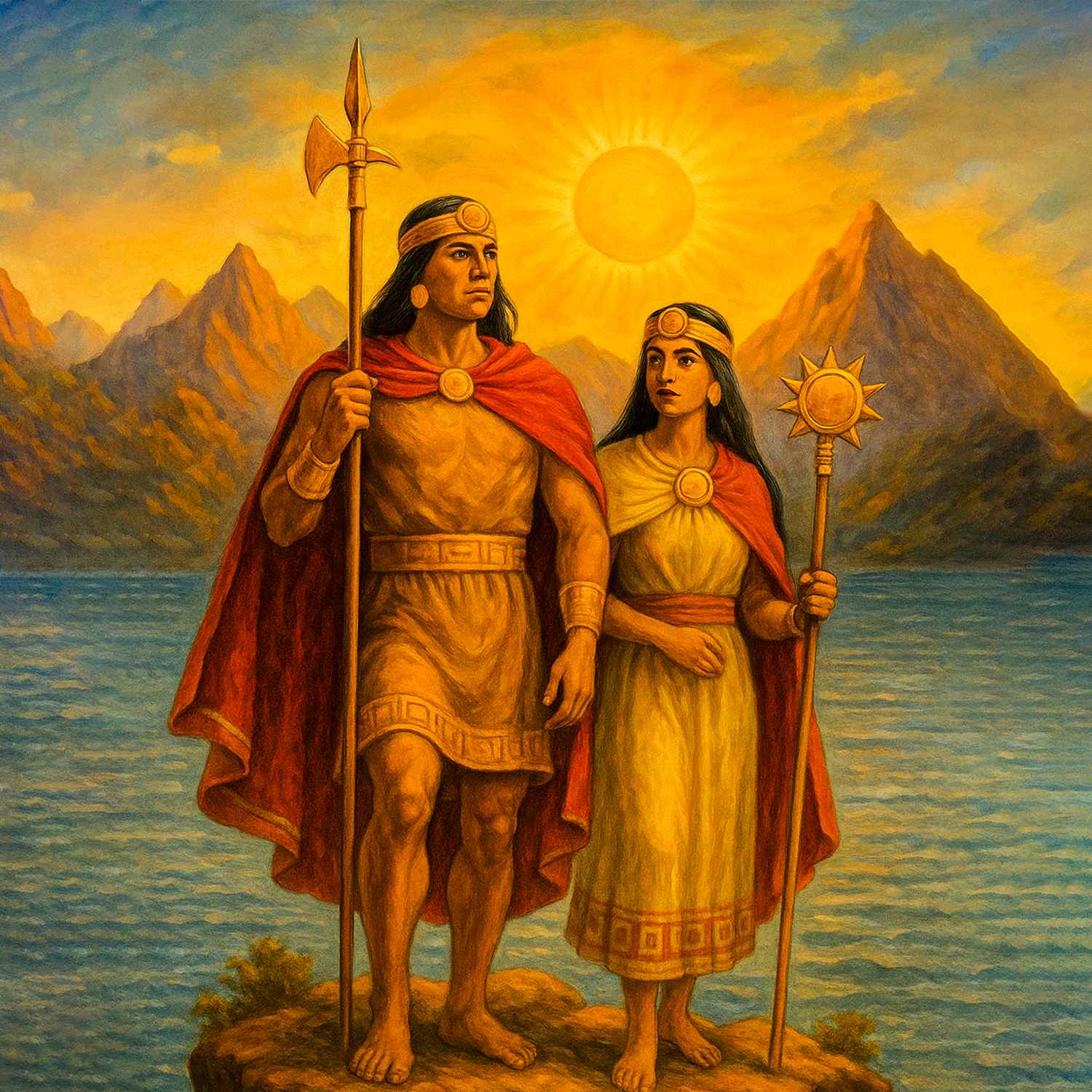 | 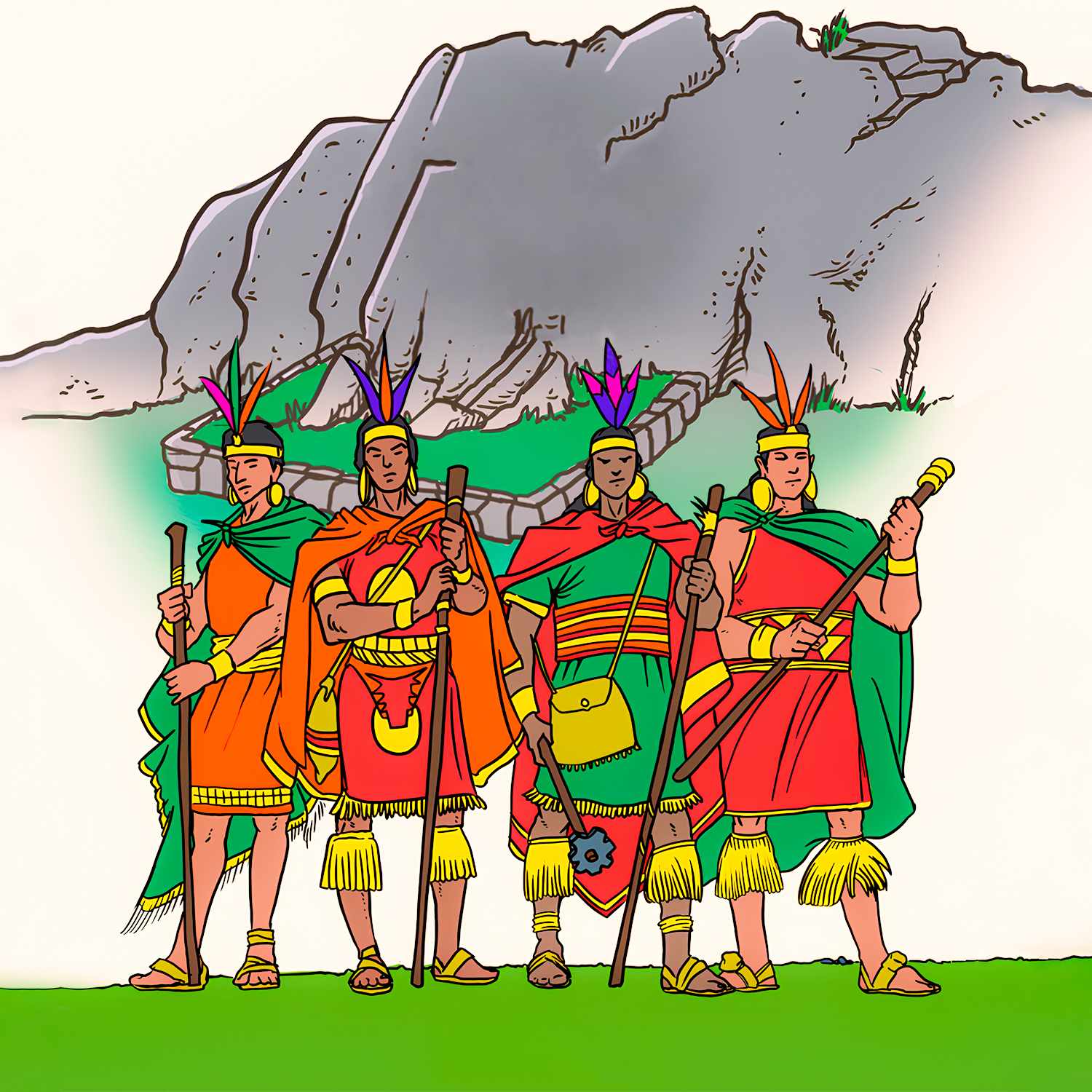 |
| The Legend of Manco Cápac and Mama Ocllo | The Legend of the Ayar Brothers |
The beginnings of the Inca Empire are deeply tied to old stories and myths. According to the Andean tradition, the Incas were seen as the "Children of the Sun," direct descendants of the god Inti. This gave them a holy status and made their rule over the people they governed seem right. Their capital, Cusco, wasn't just the political center of the empire, but also a very important spiritual center. When it was at its best, this city held up to 150,000 people and was known for very well-made buildings like the Qoricancha or Temple of the Sun, the holiest place in the empire, dedicated to the sun worship that was central to the Inca way of seeing the world.
Inca history divides into two stages, the Legendary and Historic Periods. The Inca´s oral history lists 13 emperors (Incas) with the first six from Manco Cápac to Viracocha being mythical. Events from Pachacutec to Atahualpa´s reign are more precisely recorded.
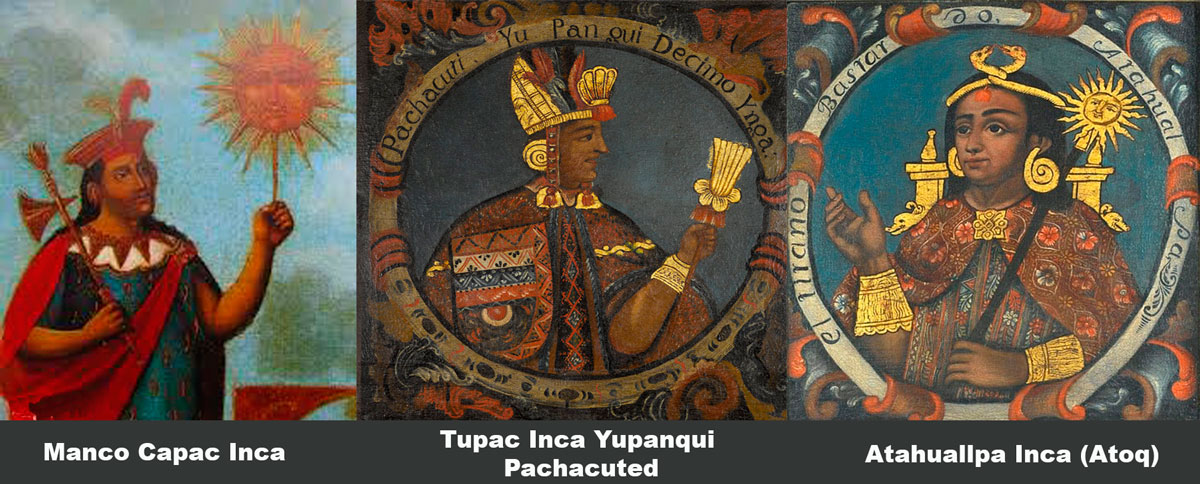
The growth was a planned political and military process, driven by a desire for unified rule over the Andes. Through smart campaigns, alliances, and wars, the Incas managed to add a large area that covered a big part of South America. Also, the growth involved 2 stages:
Gold was the "sweat of the sin" for the Incas and by law it belonged only to the emperor. It was the legend or this gold and silver that brought the Spanish conquerors to the Inca land. They collected 11 tons in gold artifacts alone as ransom for the release of Atahualpa.
Power was centered in Cusco Peru and a strict social structure was imposed. To ensure complete control, entire populations were moved so as to destroy any local power base. The Inca empire, a theocracy, was ruled by the Inca, who was considered divine.
At its height in the 15th and 10th centuries, the Inca Empire encompassed thousands of square miles, stretching almost the entire lenght of the Andes. The Incas were audacious engineers, building spectacular mountain-top citadels. They developed elaborate famring terraces, sustaining their crops by canal and drainage systems, Their social structure was extremely rigid with the emperor enjoying absolute power, and revered as a living god. The Incas worshipped the sun, moon, earth, and mountains. Animals, such as the condor and puma, were also considered sacred.
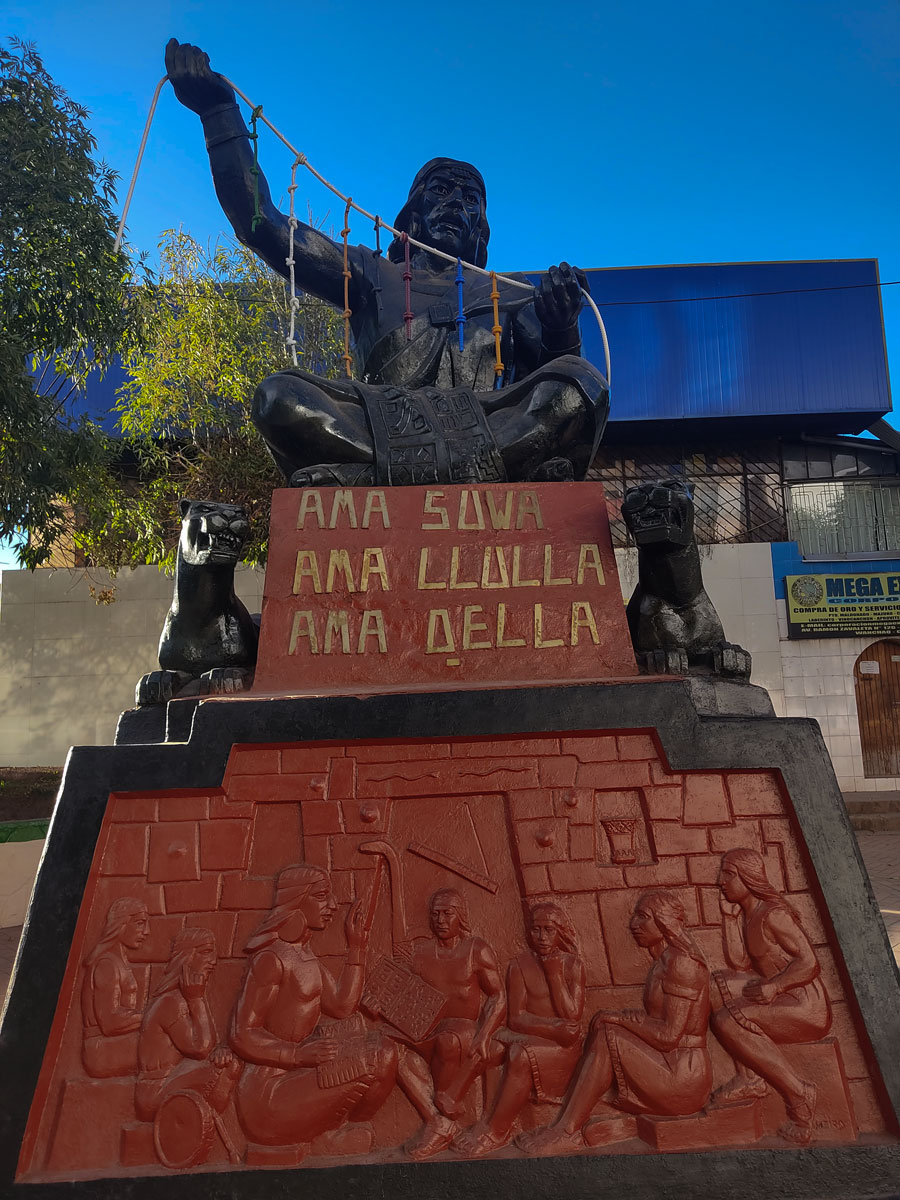
The Incas revered Inti, the Sun God, who nourished the earth and controlled the harvests. The emperor, believed to be the son of the Sun God, made offerings to the sun during religous ceremonies.
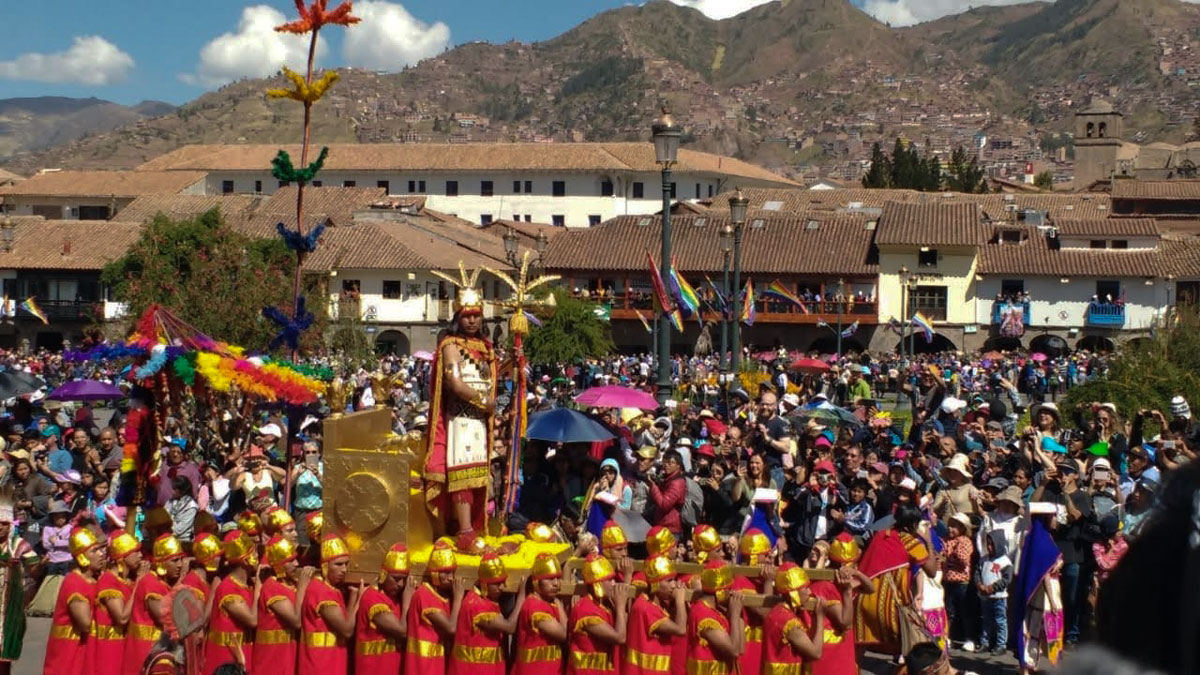
Roads were crucial to Pachacutec´s program of unification. Under his reign alone, the Incas constructed some 2,500 miles (4,000 km) of tightly packed stone roads, some scaling heights of more than 16,500 ft (5,000 m). This impressive Royal Road network of roads, about 3 ft (1 m) wide, connected all four regions of the empire, running from Quito in Ecuador, past Santiago in Chile and La Paz in Bolivia to Tucuman in Argentina.
| Important Fact: One of the most well-known parts of the Qhapaq Ñan is the Inca Trail to Machu Picchu. This path, which starts in the Sacred Valley and goes through amazing scenery, is part of the old Inca road system. |
For all its glory, Inca pre-eminence only lasted around 100 years. The reign of the first eight Incas spanned the period from the 12th century to the early 15th century, but it was the ninth Inca Pachacutec, who gave the empire its first bloody taste of conquest. A growing thirst for expansion had led the neighboring highland tribe, the Chankas, to Cuzco´s doorstep around 1438, and Viracocha Inca fled in the belief that his small empire was lost. However, his son Pachacutec rallied the Inca army and, in a desperate battle, he famously routed the Chankas.
Buoyed by his victory, Pachacutec then embarked upon the first wave of Incan expansion, promptly bagging much of the central Andes. Over the next 25 years, the Inca empire grew until it stretched from the present-day border of Ecuador and Colombia. It was during this time that scores of fabulous mountaintop citadels were built, including Machu Picchu site.
When Europeans discovered the New World, epidemics including smallpox swept down from Central America and the Caribean. In 1527 the 11th Inca Huayna Capác died of such an epidemic. Before expiring he divided his empire between his two sons Atahualpa, born of a Quitan mother, who took the north, and the pure-blooded native Cuzqueñan Huáscar, who tooj Cuzco and the south. Civil war eventually ensued and the slow downfall of the Inca empire began. By 1526 Francisco Pizarro had started heading south from Panama and soon discovered the rich coastal settlements of the Inca empire. After returning to Spain to court money and men for the conquest he returned, landing on the Ecuadorian coasts and marching overland toward Peruand the heart of the Inca empire, reaching Cajamarca in 1532, by which time Atahualpa had defeated his half-brother Huáscar.
This meeting was to radically change the course of South American history. Atahualpa was ambushed by a few dozen armed conquistadors who succeeded in capturing him, killing thousands of unarmed indigenous tribespeople. In an attempt to regain his freedom, ther Inca offered a ransom of gold and silver from Cusco, including that stripped from the walls of Qorikancha.
But after holding Atahualpa prisoner for a number of months and teasing the Incas with ransom requests Pizarro murdered him anyway, and soon marched on Cuzco. Mounted on horseback, protected by armor and swinging steel swords, the Spanish cavalry was virtually unstoppable. Despite sporadic rebellions, the Inca empire was forced to retreat into the mountains and jungle, and never recovered its glorious prestige or extent.
RELATED STORY:TAHUANTINSUYO
If you want to live the history of the Inca Empire, we recommend you prepare your suitcase or luggage for your holidays. There are a lot of activities and trips. The most popular hike in Peru is the Inca Trail, where you will discover the classic Inca path, flora, and fauna. On the last day, you will visit Machu Picchu. But if you want to delve deeper into the history, we recommend the following tours:
Machu Picchu Tours From Cusco (2 Days/1 Night)
Short Inca Trail (2 Days/1 Night)
Machu Picchu Hike (3 Days/2 Nights)
Classic Inca Trail (4 Days/3 Nights)
Lima to Inca Trail (9 Days/8 Nights)
Inca Trail and Amazon Tour (11 Days/ 10 Nights)
Peru Treks (18 Days/17 Nights)